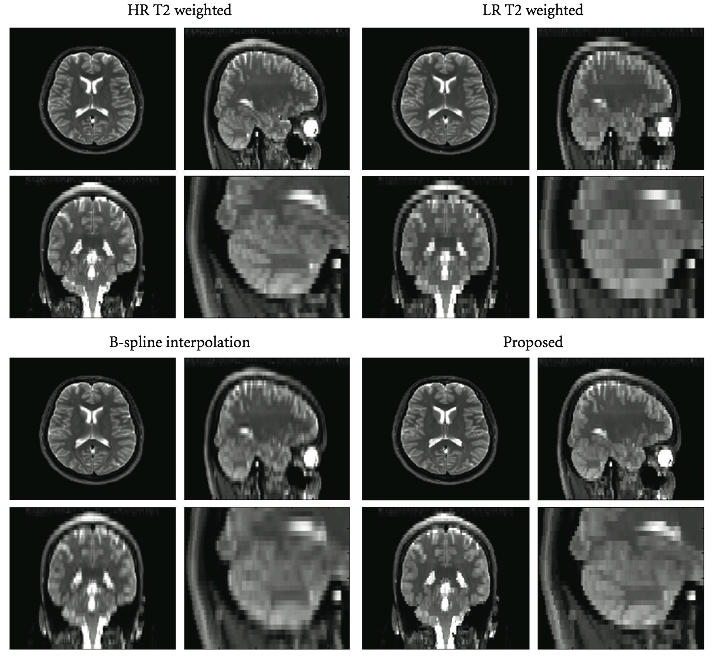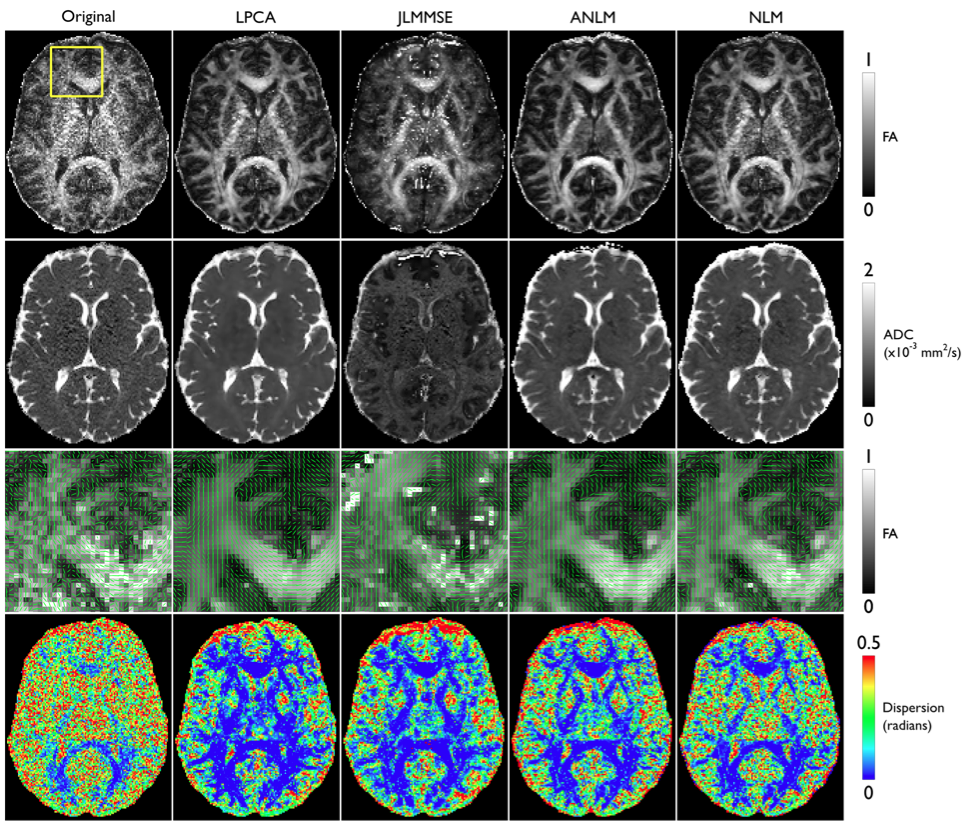Magnetic resonance (MR) imaging has very important role on current medical and research procedures. However, these images are inherently noisy and thus filtering methods are required to improve the data quality. This denoising process is usually performed as a preprocessing step in many image processing and analysis tasks such as registration or segmentation. In [3,5] we introduced non-local and sparseness based methods for MRI denoising as well as noise estimation.
In Magnetic Resonance Imaging image resolution comes limited by several factors such as hardware or time limitations. In many cases, the acquired images has to be upsampled to match on any specific resolution, in such cases, image interpolation techniques has been traditionally applied. However, traditional interpolation techniques are not able to recover high frequency information of the underlying high resolution data. In [2], a new reconstruction method is proposed to recover some of this high frequency information by using a data adaptive patch-based regularization in combination with a subsampling coherence constraint. The proposed method has been evaluated on synthetic and real clinical cases and compared with traditional interpolation methods. The proposed method has shown to outperform classical interpolation methods compared.

In the last decade, Diffusion Weighted Imaging (DWI) has gained a lot of attention due to its ability to measure the microscopic motion of water molecules within tissue, and hence lead to insight regarding cerebral white matter microstructure. One of the most prominent applications of DWI is Diffusion Tensor Imaging (DTI), where the directionality and the magnitude of water diffusion is estimated using a tensor model yielding images of normal and abnormal white matter fiber structure and maps of brain connectivity through fiber tracking. Diffusion weighted images have an inherently low signal to noise ratio (SNR) due to low signal amplitude and pronounced thermal noise, which is more evident than in conventional MRI due to extremely fast echo-planar acquisition strategies. Such low SNR makes DWI analysis complicated and biases the estimation of quantitative diffusion parameters Denoising of DWI images using overcomplete local PCA was proposed in [4].

The original, low SNR, data yielded maps of Fractional Anisotropy (FA, first row) and Apparent Diffusion Coefficient (ADC, second row) of poor quality, which were improved by all denoising methods, with the exception of JLMMSE (third column). The direction of the main diffusivity, shown as green quivers (row 3), is overlaid on the corresponding FA map, showing a much smoother and coherent pattern in the LPCA-denoised data. The uncertainty of the principal diffusivity (row 4) is drastically reduced by all denoising methods, with the greatest reduction using the LPCA filter.
[1] J. V. Manjón, P. Coupé, A. Buades, V. Fonov, L. Collins, M. Robles, “Non local MRI upsampling”, Medical Image Analysis, Vol 14 (6), pp: 784-792, 2010.
[2] J. V. Manjón, P. Coupé, A. Buades, L. Collins, M. Robles, “MRI Superresolution Using Self Similarity and Image Priors”, International Journal of Biomedical Imaging, Vol. 2010.
[3] J. V. Manjón, P. Coupé, A. Buades, L. Collins, M. Robles, “New methods for MRI Denoising based on Sparseness and Self-Similarity”, Medical Image Analysis, Vol 16(1), pp: 18–27, 2012
[4] J. V. Manjón, P. Coupé, A. Buades, L. Collins, M. Robles, “DTI denoising using overcomplete Local PCA decomposition”, Plos One, 2013.
[5] J. V. Manjón, P. Coupé, A. Buades, L. Collins, M. Robles, “MRI Noise Estimation and Denoising Using Non-local PCA”, Medical Image Analysis, Vol. 22 (1). pp: 35-47 2015.


